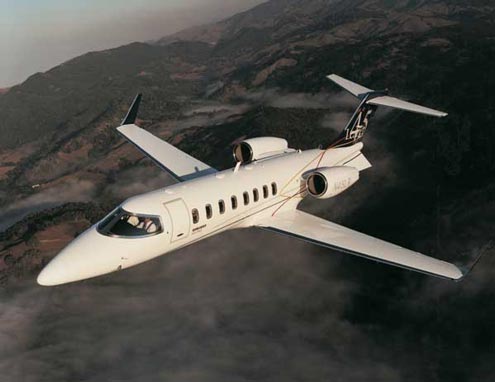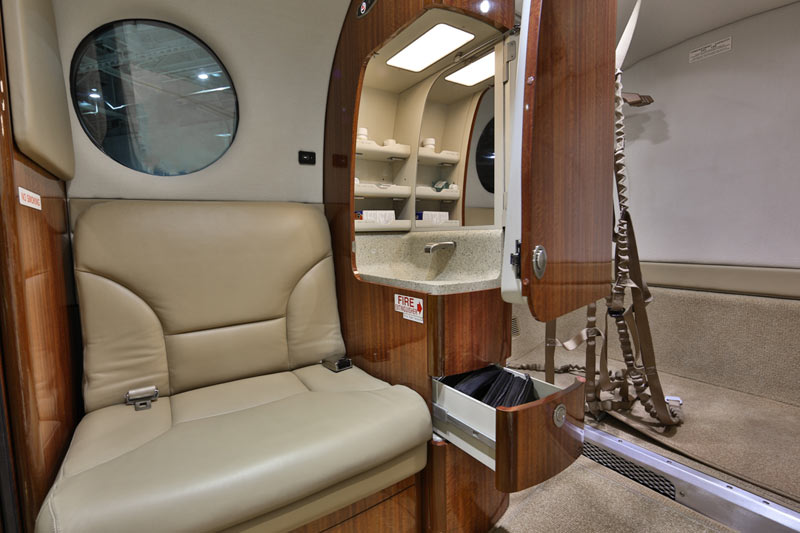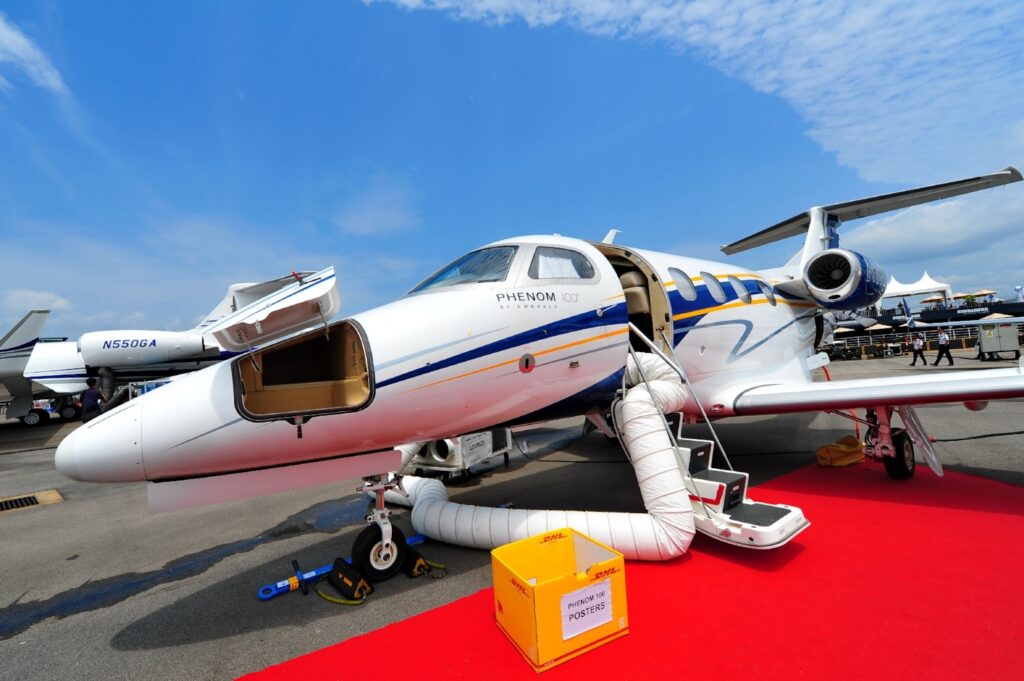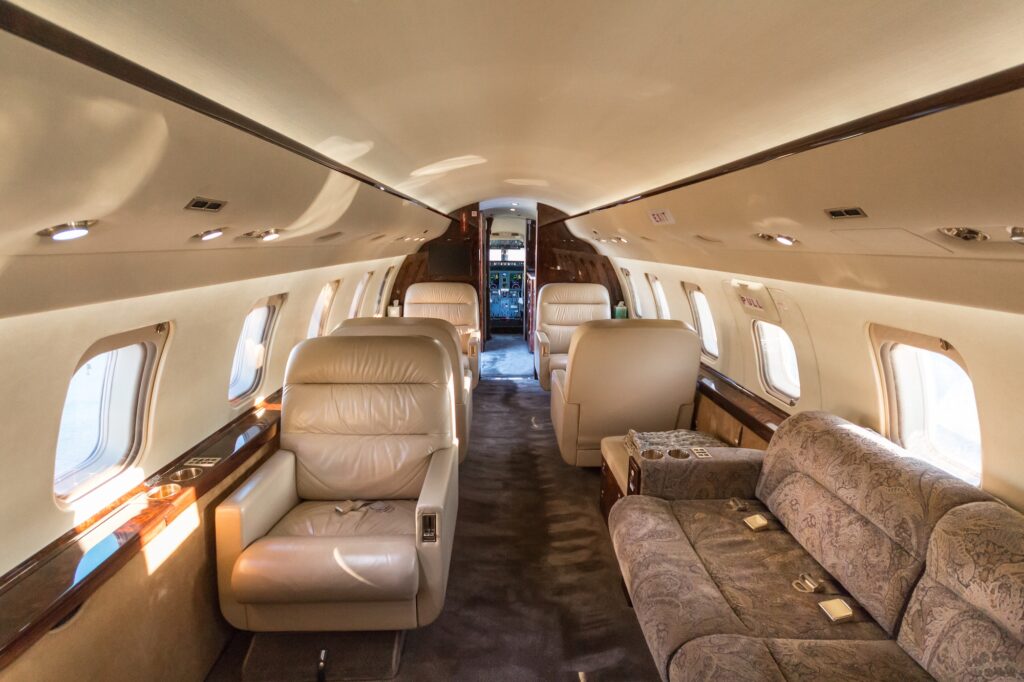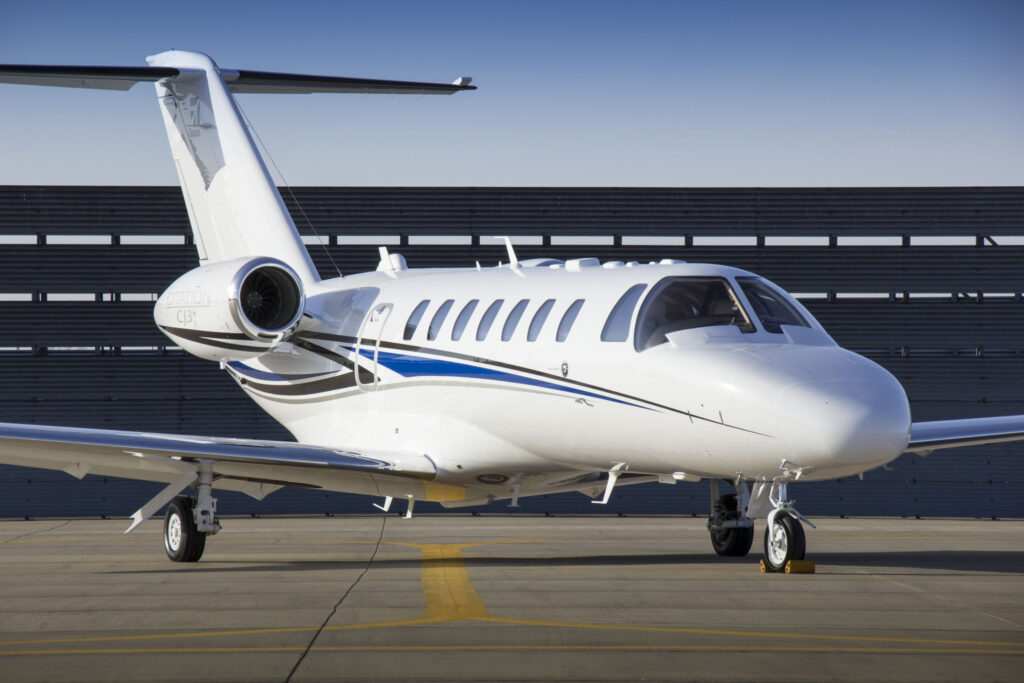Learjet 40
First delivered in 2004, the Learjet 40 essentially took the place of the Lear 31A in Bombardier’s Learjet family. The Lear 40 is nearly identical to the Learjet 45, but is equipped with a fuselage that’s about two feet shorter and has room for two fewer passengers. Apart from a shorter fuselage, the Lear 40 has similar performance data and characteristics. Bombardier introduced an upgraded version of the Lear 40, the Learjet 40XR, in 2004 with upgraded BR engines.
The Lear 40 is powered by two Honeywell TFE731-20AR engines. It has a normal cruise speed of 425 knots, a range of 1,707 nautical miles, a climb rate of 2,820 feet per minute, and requires 4,222 feet of runway to takeoff and 3,080 to land. The Lear 40XR is powered by two Honeywell TFE731-20BR engines that are slightly more powerful, improving upon its climb rate, range and hot-and-high performance.
Learjet 45
First delivered in 1998, the Learjet 45 is simply a larger version of the Learjet 40. It was created to compete with Cessna’s Citation Excel and XLS models. While comparable Citations have a roomier cabin, the Lear 45 is significantly more powerful. In the early 2000s, the Lear 45 was known to have a number of mechanical problems. In 2003, 222 Lear 45s were grounded by the FAA after the discovery of a flaw with the aircraft’s horizontal stabilizer that could prove fatal. Its mechanical issues are now a thing of the past, as the Lear 45 is known as one of the most reliable light jets in the industry. In 2003, Bombardier began delivering the Lear 45XR with the same upgraded TFE731-20BR engines found on the 40XR.
The Lear 45 is powered by the same Honeywell TFE731-20AR engines found on the Lear 40. It has a normal cruise speed of 425 knots, a range of 1,707 nautical miles, a climb rate of 2,800 feet per minute, and requires 4,241 feet of runway to takeoff and 3,103 to land. The Lear 45XR’s upgraded engines improve upon its climb rate, range and hot-and-high performance.
Learjet 55
Introduced to the market in 1981, the Learjet 55 has a number of variants, including the 55B, 55C, 55C/ER and 55C/LR. The Lear 54 and Lear 56 were meant to be built, as well, but never made it out of the factory. The Lear 55B hit the market in 1986 with an upgraded glass cockpit, improved takeoff performance and further range. The 55C was introduced in 1987 with minor fuselage design improvements and the addition of delta fins to increase stability and reduce landing speed. The 55C/ER is an extended range version of the 55C, and the 55C/LR is an even longer range version with an extra fuel tank.
The Lear 55 and each of its variants come equipped with two TFE731-3A-2B engines. The original 55 and the 55B have a normal cruise speed of 436 knots, a range of 2,296 nautical miles, a climb rate of 4,059 feet per minute, and require 4,875 feet of runway to takeoff and 3,564 to land. The 55C has similar performance specs, but has a faster climb rate and improved runway performance. The 55C/ER has a range of 2,397 nautical miles, and the 55C/LR 2,492 nautical miles.
[ulp id=’ksrvpykbSKmvluGu’]

